Discover The Great Fail
The Great Fail

The Great Fail
Author: Debra Chen
Subscribed: 250Played: 3,567Subscribe
Share
© Debra Chen
Description
The Great Fail is a true crime inspired, business podcast that examines the greatest success stories of the most prominent and prolific companies, brands, and people and what led to their demise. If you love true crime and stories of massive failures, you've come to the right place! Here we take a forensic look at stories that will irk you, shock you, and have you picking your jaw up off the floor, all while learning the oftentimes avoidable, mistakes that have ended the lives of companies and left boardrooms looking like crime scenes.
Hosted on Acast. See acast.com/privacy for more information.
82 Episodes
Reverse
On the cold morning of January 28th, 1986, anticipation filled the air as the space shuttle Challenger prepared for its 10th mission. This historic event featured Christa McAuliffe, the first civilian to join a space mission, aiming to inspire students with live broadcasts from orbit. Tragically, just 73 seconds after launch, the Challenger exploded, leaving millions of viewers in shock. In the months that followed, the Rogers Commission, led by former Secretary of State William P. Rogers, was formed to investigate the disaster. What they found would shake America's trust in NASA for years to come. Tune in to Episode 67 of The Great Fail to hear the full story. Special thanks to Adam Higginbotham for his contributions to this segment. Hosted on Acast. See acast.com/privacy for more information.
In 2015, Alex Garden, the enigmatic co-founder and CEO of Zume, unveiled an ambitious plan to revolutionize the pizza industry with advanced technology and robots. His concept caught the attention of major venture capital funds, including Jerry Yang, co-founder of Yahoo, and SoftBank's $100 billion Vision Fund. With substantial funding and media attention, Zume seemed poised to transform the food industry. However, despite having all the right ingredients, what led to their downfall was so outrageous it will have you scratching your head and questioning how half-baked the management was. This is sure to be one of the most intriguing failures you've ever heard about yet. Tune in to Episode 66 of The Great Fail to hear the full story. Special thanks to Joanna Fantozzi for her contributions to this segment. Hosted on Acast. See acast.com/privacy for more information.
In the 1980s, Action Park was a summer hotspot for many in the Tri-State area, attracting visitors from New York, New Jersey, and Connecticut. Entrepreneur Gene Mulvihill sought to transform the former Great Gorge Ski Resort into his own 'Disney of Jersey'—one of the first modern American water parks. The concept was promising.Yet, the reality took a darker turn with poorly designed rides, inexperienced staff, and unrestricted alcohol, resulting in hundreds of injuries and six deaths. These dangers left many wondering how and why Action Park could continue operating so many years without any repercussions?Tune in to Episode 65 of The Great Fail, to hear the story. Special thanks to Seth Porges, director of Class Action Park, for his insights in this segment.All credits and sources can be found at www.thegreatfail.com Hosted on Acast. See acast.com/privacy for more information.
American wrestling, which most notably revolves around the WWE brand, owes much of its success to the influential presence of the McMahons - Vince McMahon, most of all. There is no doubt about the influence he had on wrestling and the way he turned the likes of Dwayne “The Rock” Johnson, John Cena, “Stone Cold” Steve Austin, and Hulk Hogan into household names, as well as his role in creating the blueprint for pay-per-view programming. However, in the wake of the legacy he has left behind, are allegations - a dirty laundry list that includes sexual misconduct and lawsuits claiming his abuse of power. For more than four decades, he was both an executive and a performer in his own show, acting as the diabolical "Mr. McMahon." But to what extent does the fiction intertwine or blur into reality?Tune in to Episode 64 of The Great Fail to hear the story. Special thanks to Abraham Josephine Riesman for her contributions to this segment.For show notes and sources, please visit: www.thegreatfail.com. Hosted on Acast. See acast.com/privacy for more information.
Once at the top of the food chain, Quiznos achieved over $2 billion in sales and had nearly 5,000 restaurant chains. But just as things were heating up, the iconic company found itself in a pickle, leaving behind a very sour taste.Tune in to Episode 63 of The Great Fail to listen to one of the most significant and dramatic restaurant collapses in American history. Special thanks to Jonathan Maze for his contributions to this segment, and a shout-out to Adweek and Acast for their support.Sources:A brief history of Quiznos’ collapseThe Real Reason Why Quiznos Is Disappearing Across The CountryThe Quiznos Story: From Huge Success To Huge BustWHAT HAPPENED TO QUIZNOS SUBS?Wikipedia: QuiznosQuiznos – Failure Case StudyDenver-based Quiznos hit by new lawsuits from disgruntled franchiseesThree Factors That Led to Quiznos' Epic DeclineQUIZNOS: Biggest Collapse in Restaurant History?Quiznos terminates franchisees on heels of suicideFast Food’s Most Unhinged Mascots Are BackQuiznos is bringing back Spongmonkeys, its creepy rat-like mascots from 20 years ago, as the restaurant looks for a comebackDeath of a toasted sandwich salesmanHow Quiznos Failed Itself By Failing Its FranchiseesQuiznos Bankruptcy May Have Roots in Long Beach Franchisee’s SuicideThe Untold Truth Of Quiznos Hosted on Acast. See acast.com/privacy for more information.
A surprising announcement rippled through Silicon Valley in the Spring of 2017. A mysterious 'flying car' venture took the spotlight, fueled by rumors of Google co-founder Larry Page's involvement. A marvel of engineering, this all-electric innovation promised to reduce traffic congestion and open the skies for dreamers—a moonshot that captivated engineers, futurists, and tech enthusiasts. But over time, that moonshot started to look more like a longshot. With Page’s financial backing and abundant resources, how could this project have possibly failed? Hear the full story on episode 62 of The Great Fail. Special thanks for Hugh Langley for his contributions to this episode. Shoutout to Adweek and Acast. Sources: Throwback Thursday: The Rise and Fall of Flying-Car Startup Kittyhawk Kitty Hawk, the electric aircraft moonshot backed by Larry Page, is shutting down Inside the rise and fall of Kittyhawk, Larry Page's failed flying car company How Larry Page's flying-car company of the future turned into a stunning failure Kittyhawk: Employees should “blindly” trust Larry Page Where Kittyhawk Failed: The Case of Disruptive Technologies Case Study Larry Page’s Flying Car Failure Is a Lesson For Us All Larry Page’s Kitty Hawk air taxi startup is shutting down Hewlett-Packard: The Flight of the Kittyhawk (A) Harvard Case Solution & Analysis Inside the rise and fall of Kittyhawk Google co-founder’s flying car startup is winding down Visit https://thegreatfail.com/ for more sources! Hosted on Acast. See acast.com/privacy for more information.
The Wing, a pioneering and exclusive women's co-working space, shattered glass ceilings and secured over $100 million from investors, including WeWork and Airbnb, venture capitalists, and celebrity investors such as Megan Rapinoe, star of the US National Women's Soccer Team, and comedian, writer, and actress Mindy Kaling. At its peak, The Wing held a valuation of approximately $365 million, maintained 11 locations across NY, LA, Boston, and Chicago, and catered to 12,000 members with a waitlist of 9,000. But as The Wing was enjoying its ascent into stardom, its employees would soon threaten to clip the Company’s soaring wings. Tune in to Episode 61 of The Great Fail to hear the story. Special thanks to Adweek’s Olivia Morley for her contributions to this segment and shout out to Adweek and Acast for their support. Sources: Why woke women’s co-working space the Wing failed: ‘A gossipy, very toxic environment’ The Wing Shuts Down After an astonishing rise and fall, the Wing finally folds Perspective: The real reason the all-women workspace failed What Was the Wing? To the extent that it’s remembered, it will be as an artifact of the Trump era. The girlbosses who girlbossed too close to the sun: The demise of ‘women’s utopia’ The Wing was long overdue The exclusive no-men-allowed club that raised $32 million from investors like WeWork just opened a brand new location — take a look inside The Wing CEO Audrey Gelman resigns amid employee ‘digital walkout’ Inside The Wing: How Cofounders Raised $2.4M To Open All-Women Social And Coworking Club The Wing's Chic New SoHo Space Will Make You Want to Join ASAP Audrey Gelman Is Stepping Down As CEO of The Wing Hosted on Acast. See acast.com/privacy for more information.
For 52 years, Bed, Bath & Beyond was the destination for high-quality home goods merchandise, top brands, and a discovery zone for home shopping that made it inspiring and fun. By January 2014, the company had operated more than 1500 stores in North America and had reached a share price of $70 dollars. Despite all the success, the company would soon become a victim of mismanagement, burdened with debt and unwanted inventory, unaware that its own fate would soon be put on layaway. Tune in to Episode 60 of The Great Fail to hear the story. Special thanks to Seth Basham for his contributions to this segment. Sources: Bed Bath & Beyond Used to Be Great. These Two Are Why. Inside Overstock’s grand plan to reinvent itself as Bed Bath & Beyond All Buy Buy Baby stores losing after last-ditch deal falls through The $11.8 billion mistake that led to Bed Bath & Beyond’s demise 3 key mistakes that doomed Bed Bath & Beyond The rise and fall of Bed Bath & Beyond, the iconic housewares retailer that has filed for bankruptcy and is closing its remaining stores After 52 Years, Why Bed Bath & Beyond Went Bankrupt What Went Wrong at Bed Bath & Beyond The Hidden Reason Behind Bed Bath & Beyond's Demise Bed Bath & Beyond and bankrupt? Bed Bath & the great Beyond: How the home goods giant went bankrupt Why is Bed Bath & Beyond failing? Reasons behind bankruptcy protection explored Hosted on Acast. See acast.com/privacy for more information.
In 1952, Revlon created one of the most iconic, paradigm-shifting ad campaigns known as "Fire & Ice," which posed a dramatic twist on why women wore makeup. Instead of seeking male admiration, it empowered women by prioritizing their ambitions and needs. For decades, Revlon spearheaded feminism and cosmetic innovation, establishing itself as the world's second-largest producer, with products sold in 150 countries. However, in 2022, it faced another transformative phase, resulting in Revlon's once-vibrant prominence fading in its luster. Tune in to Episode 59 of The Great Fail to hear the story. Special thanks to Robin Albin for her contributions to this segment. Revlon Sources What Went Wrong at Revlon Why did cosmetic giant Revlon fail? Revlon Proves That You Can Be Too Big To Fail Here’s why Revlon just filed for bankruptcy—no, it’s not because of the #NoMakeup movement Revlon, Beauty Icon In Crowded Market, Files For Bankruptcy Revlon files for bankruptcy in US after supply chain trouble and surging costs Revlon: makeup icon falls to social media rivals Wikipedia: Revlon Citigroup cannot recoup Revlon payouts after nearly $900 million gaffe: U.S. judge Citibank can’t get back $500 million it wired by mistake, judge rules What went wrong with cosmetics giant Revlon? Bankrupt beauty: Lessons from Revlon’s supply chain failures This 1952 Ad Was The First To Acknowledge That Women Wear Makeup For Themselves, Not Men Hosted on Acast. See acast.com/privacy for more information.
In 1895, Schwinn was driven by the pursuit of an American dream when bicycling was still a relatively new sport. As one of the longest-standing bicycle companies, Schwinn signified influence and innovation amidst a biking craze that further catapulted their success. But over the years, it would lose its luster after a series of poor leadership decisions that led it to a dead end. Get the full story on Episode 58 of The Great Fail to hear the story. Special thanks to Jay Townley for his contributions to this segment.SCHWINN SOURCES No Hands: The Rise and Fall of the Schwinn Bicycle Company, an American Institution by Judith Crown and Glenn Coleman Schwinn Bicycle Company A Short History of Schwinn: 1990s Bankruptcy though 2021 No hands: The rise and fall of the Schwinn Bicycles Company: an American institution, Judith Crown & Glenn Coleman, Henry Holt&Co. A Rough Ride for Schwinn Bicycle Schwinn Cycle and Fitness L.P. - Company Profile, Information, Business Description, History, Background Information on Schwinn Cycle and Fitness L.P. Hosted on Acast. See acast.com/privacy for more information.
Mars Hill was a Seattle-based church led by Mark Driscoll- a beloved, endearing, powerful presence in the evangelical Christian community. He built Mars Hill into one of the fastest-growing churches in the nation, with close to 15,000 attendees and an additional 260,000 viewers tuning in online every week. But behind the perfect persona, was a twisted reality waiting to be uncovered. What was revealed in its final days was a trail of abuse, fraud, intimidation, sexism, and a fall from grace that would make it one of the most spectacular collapses in Christianity today. Listen to Episode 57 of The Great Fail to hear the full story. Special thanks to Adweek and Acast and Professor Jeremy Cohen for contributing to this episode. Mars Hill Sources 'The Rise and Fall of Mars Hill': The abuses of a superstar pastor and megachurch ruins left behind Lawsuit: Controversial Pastor Ran Mars Hill Megachurch Like a Crime Syndicate WHO KILLED MARS HILL CHURCH? THERE’S ONE SUSPECT EVANGELICALS SIMPLY AREN’T PREPARED TO INTERROGATE How a Megachurch Melts Down Wikipedia: Mars Hill Church Megachurch pastor Mark Driscoll was an evangelical rock star. Here's how he fell from grace. Wikipedia: Mark Driscoll Special Guest: Jeremy Cohen, Assistant Professor, Department of Religious Studies, McMaster University Jeremy Cohen is an anthropologist of religion and an Assistant Professor at McMaster University in the Department of Religious Studies, where he teaches courses on topics ranging from cults and conspiracy theories to death and dying, and the occult. His research examines new religious movements seeking radical longevity and immortality, and the intersections of science, technology, and religion. Jeremy has written for the Globe and Mail, The Conversation, and the Hamilton Spectator, and has been featured in the NY Post, Coast to Coast AM Radio, and Inverse Magazine. He is also the co-founder and co-editor of the death and dying resource, TalkDeath.com. Hosted on Acast. See acast.com/privacy for more information.
FTX was once touted as the cryptocurrency trading platform with its founder, visionary Sam Bankman-Fried, promising to revolutionize the industry.This once-promising company was on a path to decentralize and democratize a highly complex investment within the crypto world but by 2022, headlines that read, “Scam of the Century”, “Bank Fraud and Conspiracy”, and “Criminal Charges” pointed to a grim future.What happened and who was to blame? Listen to episode 56 of The Great Fail to hear the full story with special guest Jason Notte, staff writer at Adweek. FTX Sources Have celebs learned their lesson from the FTX debacle? The rise and fall of FTX The Collapse of FTX: What Went Wrong with the Crypto Exchange? Tom Brady And Other A-Listers Sued For Fumbling FTX Endorsements FTX Investors Sue Celebrity Endorsers Celebrity Crypto-Hawkers Should Get a Close Look Timeline: The rise and spectacular fall of FTX SBF: THE VIRTUE WAS THE CON Why Did FTX Collapse? Here’s What to Know. Should Sports Stars And Celebrities Endorse Or Accept Crypto Pay After Entanglement In FTX Scandal? Sports stars lending legitimacy to crypto firms raises ethical questions when many fans can’t afford to lose The Fall of FTX and Sam Bankman-Fried: A Timeline Special Guest: Jason Notte, Staff Writer at Adweek Jason is an Adweek staff writer covering the business of marketing. Jason has previously covered marketing, technology and personal finance and for TheStreet, MarketWatch and MSN Money. Hosted on Acast. See acast.com/privacy for more information.
The Great Fail kicks off Season 3 with one of the biggest failures of 2023 thus far, as we watched one of the nation’s largest banks unravel. Once a rising star in the tech industry, Silicon Valley Bank was a paragon for startup founders and venture capitalists reaching dizzying heights of success in 2020. So how did it go from boom to bust just a few short years after? Was it greed, mismanagement, or something more sinister? You won't want to miss this riveting exploration of Silicon Valley Bank's rise and fall. Listen to Episode 55 of The Great Fail to hear the story. Special thanks to Professor Mark T. Williams for his contributions to this segment. Sources For 40 years, Silicon Valley Bank was a tech industry icon. It collapsed in just days WHAT REALLY HAPPENED TO SILICON VALLEY BANK What Happened to Silicon Valley Bank? The tech industry moved fast and broke its most prestigious bank Here’s how the second-biggest bank collapse in U.S. history happened in just 48 hours The Ugly Lessons of Silicon Valley Bank’s Collapse Why almost everyone failed to predict Silicon Valley Bank’s collapse Fed's Barr to Congress: SVB's failure is 'textbook case of mismanagement' This is why SVB imploded, says top Fed official FDIC says First Citizens Bank has reached deal to purchase Silicon Valley Bank Silicon Valley Bank Collapse: Lessons for Boards Is Moody’s Ratings Downgrade The Reason Why Silicon Valley Bank Fell? Silicon Valley Bank: A Timeline and Summary of Events Silicon Valley Bank's demise began with a downgrade threat Hosted on Acast. See acast.com/privacy for more information.
Several legal cases were pending, culminating in January 2019, when a class-action lawsuit led by the Washington Attorney General Bob Ferguson was filed against the multi-level marketing Company, LulaRoe. This one alleged that the founders of LulaRoe made false and deceptive representations regarding their business, inspiring thousands of optimistic entrepreneurs to invest their money into the lucrative venture-- only to find themselves drowning in debt, mortgaging their homes, and depleting their life savings. Though many had not yet heard of LulaRoe, this lawsuit would soon topple the billion-dollar enterprise into one of the most well-known scandals in America. Listen to Episode 54 of The Great Fail to hear the story. Special thanks to Professor Kelly Richmond Pope for her contributions to this segment. LulaRoe Sources LuLaRoe Was a Billion Dollar Leggings Empire Until the Lawsuits. LuLaRich Tells the Story The Rise And Fall Of LuLaRoe’ Investigates Scandal Behind Marketing Company The MLM LuLaRoe Has Seen Tons of Controversy — Here's Why Is LulaRoe Still in Business? Amazon's 'LulaRich' Has Everyone Asking the Same Question LulaRich! 9 Lessons You Can Learn From LulaRoe’s Downfall Lessons from LuLaRich that Resellers Can Learn From 4 Shockingly Manipulative Work Moments In The 'LuLaRich' Documentary ‘It’s very culty’: the bizarre billion-dollar downfall of fashion company LuLaRoe These Leggings May Ruin Your Life LuLaRoe to pay $4.75 million to resolve AG Ferguson’s lawsuit over pyramid scheme Hosted on Acast. See acast.com/privacy for more information.
It was a somewhat ordinary day for David Pyott, the CEO of Allergan, back in April 2014. That is until his eyes glanced over at the TV screen in his office, where he learned that billionaire hedge fund manager and activist investor Bill Ackman was about to back the takeover of his company by way of a hostile takeover. The acquirer was none other than the infamous and controversial pharmaceutical company, Valeant Pharmaceuticals. Valeant was a Wall Street darling and one of Canada’s largest companies. So why and how did this transaction lead to Valeant's downfall only a year later? Listen to Episode 53 of The Great Fail to hear the story. Special thanks to Joe Nocera for his contributions to this segment. Valeant Pharma Sources The rise and fall of Valeant Pharmaceuticals The Roll-Up Racket What Valeant’s fall from grace can teach the drug industry THE VALEANT MELTDOWN AND WALL STREET’S MAJOR DRUG PROBLEM Valeant CEO didn’t tell investors real story about sales growth Explaining Valeant: The Main Theories A Buried Scandal, Shedding Of Assets, And Forthcoming Spinoff Means Substantial Upside For Bausch Health The Demise of Valeant Pharmaceuticals: A Case Study in Rotten Culture and Business Ethics Valeant Makes Hostile Bid For Allergan Inside A Hostile Takeover: The Allergan-Valeant War Wikipedia: Milan Panić Special Guest: Joe Nocera, Business Columnist at Bloomberg Joe Nocera is a former Bloomberg Opinion columnist. He has written business columns for Esquire, GQ and the New York Times, and is the former editorial director of Fortune. He is the host and writer of the Bloomberg-Wondery podcast "The Shrink Next Door." Hosted on Acast. See acast.com/privacy for more information.
Bikram Choudhury was the founder of the wildly popular hot yoga practice that many considered to cure ailments, detoxify bodies, and change lives. At the height in 2006, there were 1,650 studios in at least 40 countries, but by 2013, a series of allegations surfaced when one by one, women stepped forward with accusations that included sexual assault, rape, and abuse against the man revered as a guru. Listen now to hear about the rise and fall of the Bikram Yoga empire on Episode 52 of The Great Fail. Special guest Dave Emerson, Founder of Trauma Center Trauma Sensitive Yoga. And shoutout to our partners at Adweek and Acast. Bikram Yoga Sources He made a fortune from his trademarked Bikram yoga, but now his empire is in tatters The incredible rise and fall of yogi-to-the-stars Bikram Choudhury 'He said he could do what he wanted': the scandal that rocked Bikram yoga Bikram yoga's moral dilemma Wikipedia: Bikram Choudhury New Netflix Documentary Shows Bikram’s Dark Side, So Why Are Yogis Still Doing It? Bikram is Back: The Unapologetic Tour The Horrifying Cult Origins of Bikram Yoga: Rape, Harassment and Lies The Overheated, Oversexed Cult of Bikram Choudhury Global Yoga Market Outlook Hosted on Acast. See acast.com/privacy for more information.
Before there was Facebook, there was MySpace, once the world’s most dominating social networking company. In the summer of 2005, one of the biggest deals in internet history made headlines when News Corp., famously known as Rupert Murdoch’s media empire, acquired MySpace for $580 million in cash. In the business realm, it seemed that with the backing of the media giant, MySpace would have the world at its fingertips. And to the outside, it appeared that Myspace was going to be unstoppable. Find out how MySpace got unfriended on Episode 51 of The Great Fail. Hosted on Acast. See acast.com/privacy for more information.
We’re doing a special episode on cryptocurrency this week and covering what occurred in May of 2022 when the world watched as one of the biggest projects imploded. Once valued at $400 billion, the project was known as TerraUST, a stablecoin that was going to transform the crypto market and the way that traditional payments would be made in the future. Instead, investors watched as its market value dropped by almost 99% within 24 hours. What led to this death spiral and more importantly, what does the future hold for crypto investors? Our special guest Omid Malekan, Adjunct Professor at Columbia Business School, will break down the story in Episode 50 of The Great Fail. Terra Sources How a Trash-Talking Crypto Founder Caused a $40 Billion Crash Terra Was Too Big to Fail, and It Failed: Bloomberg Crypto TerraUSD’s collapse will take down every other algorithmic stablecoin, crypto analysts say TerraUSD ‘stablecoin’ delisted from crypto exchanges How $60 Billion in Terra Coins Went Up in Algorithmic Smoke The Fall of Terra: A Timeline of the Meteoric Rise and Crash of UST and LUNA The Terra (LUNA) Collapse: 4 Lessons To Be Learned (Opinion) The Real Reasons Behind the Crypto Crash, and What We Can Learn from Terra’s Fall Luna Crypto Crash: What Happened To Terra Luna? Who is Do Kwon, the ‘lunatic’ who created a $60 billion cryptocurrency that collapsed in days? Crypto investors contemplate SUICIDE and hide from friends seeking revenge for losing their life savings as currency crashes to zero Terra LUNA Investors Lose Everything In 98 Percent Plunge, Suicide Hotline Posted At Top Of Forum All Those Celebrities Pushing Crypto Are Not So Vocal Now Hosted on Acast. See acast.com/privacy for more information.
Back in the early 2000s, the Von Dutch ubiquitous trucker hats were seen everywhere- and their line of denim brought us the classic low-rise, sometimes frayed at the hem, sometimes with tons of bling, but never without the iconic “Von Dutch” stamped logo. That uniquely distinctive font bared the cool culture Americana aesthetic. Von Dutch’s popularity was so tremendous that in 2003, the Company was raking in $33 million in sales from their jackets, denim, t-shirts, and trucker- until the brand got hit with counterfeiting. But the story of Von Dutch isn’t just about rhinestones and rip-offs, it was a story about deception, betrayal, murder, and a scandal that would serve as the epitaph of its tombstone. Find out how it all went down in Episode 49 of The Great Fail.Join Retail Brew's community of retail professionals by subscribing here!Sources:Inside The Messy, Chaotic Downfall Of Von Dutch A New Docuseries Explores the Rise and Fall of Von Dutch Drug fronts, murder, and Paris Hilton: the rise and fall of Von Dutch The Untold Story of Von Dutch Wikipedia: Von Dutch S.C. man shot dead in Venice Beach How Von Dutch’s Trucker Hat Empire Ended in Chaos and Death 1999 Week Before There Was Snapchat: A Look Back At The Biggest Stars Of 1999 Hosted on Acast. See acast.com/privacy for more information.
Get ready to hear about the most scandalous retail pharmacy chain of all time that was Phar-Mor. We hear about companies and financial misconduct frequently–stories of cooked books and misappropriated funds are hardly rare, but often leave us questioning–how do companies manage to pull these off, and more importantly how do they get past trained professionals, auditors and investors? In this episode, our featured guest Professor Kelly Richmond Pope of DePaul University, a forensic accounting expert with a specialty in corporate crime, will explain how an accident exposed a $1 billion fraud and took down one of the nation’s largest retail chains. Listen now to Episode 48 on The Great Fail. Hosted on Acast. See acast.com/privacy for more information.



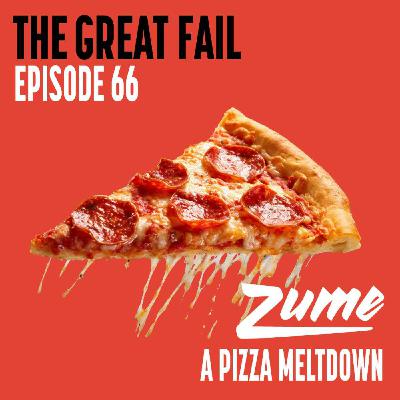

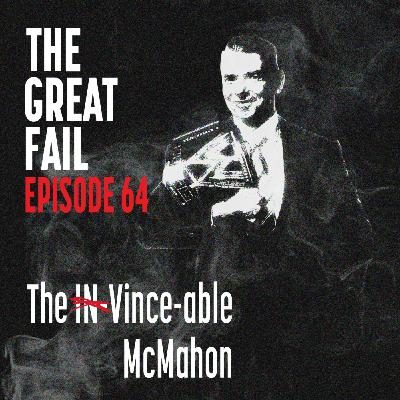
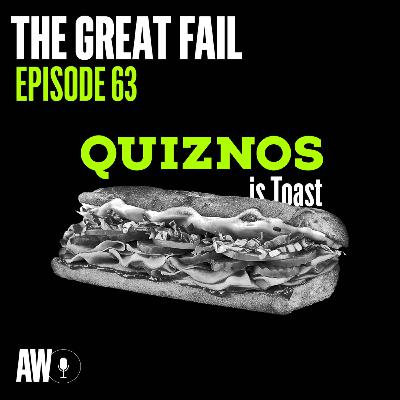
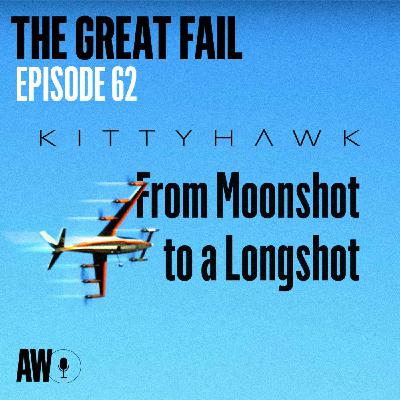



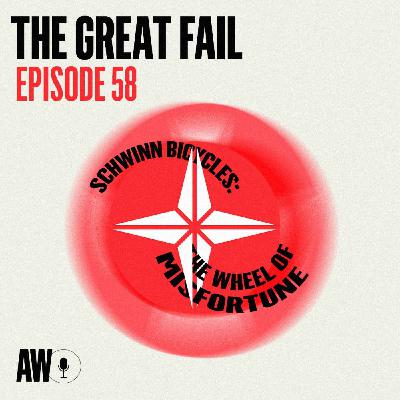













I actually started listening to this podcast for this exact case study! very excited you are covering it!!!
or, you know, realize that your poor planning shouldn't constitute an emergency for someone else United